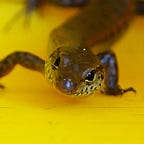Cuckoo for Cuckoos
It’s that time of year
It’s Spring. Sun has nudged away the drizzle and the ceiling fans are switched to high. While I pursue pieces of paper blown off the desk, up in that bright blue cloudless sky other chases are taking place. Sometimes the chasers are Magpie-larks, sometimes Blue-faced Honeyeaters. Hornbill Friarbirds often accompany them. Willie Wagtails take part for the love of it. Always up for a fight, those pugnacious little devils.
The chased are cuckoos — Channel-billed Cuckoos with their oversize novelty beaks and honking shrieks, and Pacific Koels whose calls at night keep people awake (not me!). In my garden, Fan-tailed Cuckoos somehow manage to avoid the worst of the attention. They even have time to perch and feed.
Although their nest parasitism makes them unpopular among other birds, they are in favour with gardeners and horticulturalists. In ‘The Useful Birds of Southern Australia with Notes on other Birds’ (published in 1907, when you could get away with titles like that), Robert Hall described them as being very beneficial (depending on whether you are person or bird):
The mature Cuckoo is supposed to be the only bird that eats hairy caterpillars, though, if I mistake not, one of the birds lately introduced to our shores also affects this diet. At the same time it probably holds the distinction of…
